 Get In Touch
Get In Touch
 Get In Touch
Get In Touch
Social media has revolutionized the marketing landscape, presenting unparalleled opportunities and challenges for businesses, including those navigating the competitive digital ecosystem. For digital marketing agencies in Philadelphia, these platforms have become vital tools to engage customers, build robust brand identities, and drive measurable sales growth. Originally designed for personal connections, social media has evolved into a multifaceted marketing powerhouse that has shifted priorities in customer interaction, advertising strategies, and branding. By leveraging these platforms effectively, businesses can create dynamic, impactful campaigns tailored to resonate with diverse audiences.
One of the most significant changes social media has introduced is the move from one-way communication to a two-way dialogue. Traditional advertising, such as television or print ads, allowed brands to broadcast their messages without direct feedback. Social media, however, has created platforms for real-time conversations, enabling businesses to respond to customer inquiries, complaints, and compliments instantaneously. This shift not only humanizes brands but also fosters customer loyalty.
Social media platforms allow businesses to create communities around their brands. For example, companies can establish groups, pages, or hashtags that bring like-minded individuals together. These communities serve as spaces for engagement, where customers share their experiences, seek advice, and advocate for the brand. Such interactions build a sense of belonging and enhance brand loyalty.
Social media platforms like Facebook, Instagram, and LinkedIn have redefined advertising by offering advanced targeting options. Advertisers can now use demographic, geographic, and behavioral data to reach specific audiences. This precision minimizes wasted ad spend and maximizes ROI, a stark contrast to the broader reach of traditional advertising methods.
For small and medium-sized businesses, social media offers cost-effective advertising solutions. Platforms like TikTok and Instagram enable brands to reach millions with relatively low budgets through organic content, influencer collaborations, or paid ads. The flexibility of these platforms has democratized advertising, making it accessible to businesses of all sizes.
Social media has also popularized interactive content such as polls, quizzes, and live videos. These formats engage users more effectively than static ads, encouraging them to interact directly with the brand. For example, Instagram’s “Stories” feature allows businesses to post time-sensitive content that includes interactive elements like swipe-up links or Q&A sessions, creating a dynamic marketing experience.

Social media places a strong emphasis on visual branding. Platforms like Instagram and Pinterest prioritize high-quality images and videos, making a visually appealing aesthetic crucial for success. Brands invest in consistent color schemes, typography, and imagery to create a recognizable and memorable online presence.
Today’s consumers value authenticity, and social platforms have pushed brands to adopt more transparent practices. Through behind-the-scenes content, user-generated posts, and honest communication, brands can build trust with their audience. For instance, a company might share stories about its sustainable practices or spotlight real customer testimonials to connect more genuinely with followers.
Social media has also blurred the lines between corporate and personal branding. Executives and employees often use platforms like LinkedIn and Twitter to share insights, achievements, and company updates, creating a human face for the brand. This personal approach not only boosts credibility but also enhances the company’s overall reputation.
Social media has empowered marketers with detailed analytics and performance metrics. Platforms provide insights into engagement rates, click-through rates, and audience demographics, enabling businesses to refine their strategies continuously. These analytics offer valuable feedback on what resonates with audiences, allowing brands to adapt and evolve.
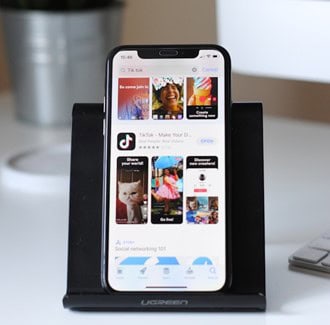
With millions of businesses vying for attention on social platforms, standing out can be challenging. This oversaturation has made it more difficult for brands to achieve organic reach, often necessitating paid promotions.
Social media platforms frequently update their algorithms, impacting how content is displayed and discovered. Marketers must stay agile, continuously updating their strategies to align with these changes.
The openness of social media also exposes brands to public criticism. A single negative comment or viral post can damage a brand’s reputation, requiring swift and effective crisis management.
The social media landscape continues to evolve, with trends like augmented reality (AR), virtual reality (VR), and social commerce gaining momentum. Platforms are increasingly integrating e-commerce features, allowing users to shop directly from their feeds. Additionally, the rise of AI-powered tools will enable even more personalized marketing experiences.
Social media has undeniably transformed marketing by reshaping customer interaction, advertising strategies, and branding. Businesses that embrace these changes and adapt to the dynamic nature of social platforms can not only survive but thrive in this digital age. By leveraging social media effectively, companies can build stronger connections with their audiences, enhance brand loyalty, and drive long-term growth.
In business, a strong and recognizable brand presence is essential for success. Social media, a primary communication channel for businesses, provides opportunities for direct interaction with consumers. However, the effectiveness of a business’s social media strategy often hinges on one crucial factor: consistent branding. When businesses maintain a uniform brand voice, image, and message across all social media platforms, they foster trust, improve customer recognition, and reinforce their identity.
Social media marketing agencies in Philadelphia can help your business create consistent branding across social media platforms while providing actionable strategies to help businesses maintain cohesion in their digital presence.
Consumers are exposed to an overwhelming amount of content daily. Consistent branding helps your business stand out and be instantly recognizable. Whether it’s your logo, color scheme, tone of voice, or tagline, maintaining consistency across platforms makes your brand memorable.
For example, if a customer sees your Facebook post in the morning, your Instagram story in the afternoon, and a tweet in the evening, all of these should reflect the same branding elements. This familiarity creates mental associations, helping consumers recognize your brand regardless of where they encounter it.
Consistency builds trust. When customers see uniformity in how your brand presents itself, they perceive your business as professional and reliable. On the contrary, inconsistency in branding can create confusion and skepticism. For instance, if your Twitter feed is casual and humorous but your LinkedIn profile is formal and serious, it may raise doubts about the authenticity of your business.
Trust is particularly critical in social media, where customers rely on a brand’s online presence to make purchasing decisions. A brand that communicates cohesively is more likely to be seen as dependable and credible.
Your social media presence is a reflection of your business’s identity and values. When your branding is consistent across platforms, it reinforces what your brand stands for. This alignment is crucial in communicating your business’s mission and goals to your audience.
For example, if your brand promotes sustainability, then your messaging, imagery, and tone across all social media channels should highlight your commitment to the environment. Consistent storytelling ensures that your audience clearly understands and connects with your brand’s core values.
A seamless, cohesive experience across platforms contributes to a positive customer journey. Whether a potential customer interacts with your brand on Instagram, Facebook, or X, they should feel like they are dealing with the same company. This enhances user experience and eliminates friction during touchpoints.
By creating consistent branding, you also make it easier for customers to navigate your content, engage with your posts, and take action (e.g., visiting your website or making a purchase). A fragmented brand image can lead to confusion and diminish engagement.
To achieve brand consistency across social media, businesses should focus on several key elements:
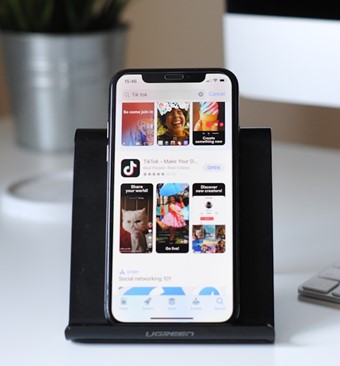
Your brand’s visual identity is one of the most recognizable elements of your business. This includes your logo, color palette, typography, and imagery style. Use these elements uniformly across platforms to create a cohesive look.
Your tone of voice is how your brand “sounds” in written communication. Whether your brand is playful, authoritative, or casual, it’s important to maintain the same tone across all social media platforms.
For instance, a luxury fashion brand would likely use a sophisticated, elegant tone, while a tech startup might prefer a friendly and innovative voice. Maintaining a consistent tone ensures that your brand feels authentic and cohesive to your audience.
Your messaging should align with your brand’s mission and values. Develop a content strategy that consistently reinforces your core message across platforms. The themes and topics you focus on should also align with your overall brand identity.
For example, if your brand is focused on health and wellness, your social media posts should regularly highlight tips, advice, and products related to that theme. Avoid posting unrelated content that may confuse your audience or dilute your brand identity.
Hashtags and keywords play a role in how your content is discovered on social media. Consistently using brand-specific hashtags or relevant keywords helps improve visibility and reinforces your brand identity.
For example, Coca-Cola often uses the hashtag #ShareACoke, which has become synonymous with their brand. Having signature hashtags allows your audience to easily identify and engage with your content.
Creating comprehensive brand guidelines is the first step toward ensuring consistency. These guidelines should include everything from logo usage, colors, fonts, and imagery styles to tone of voice and messaging. Share these guidelines with your team, including social media managers and content creators, to ensure everyone follows the same rules.
Social media management tools like Hootsuite, Buffer, or Sprout Social allow you to schedule posts and monitor content across platforms from one centralized location. By using these tools, you can ensure that your content remains consistent and well-coordinated across all channels.
If multiple people are managing your social media accounts, ensure that everyone is on the same page. Regularly update your team on branding expectations and any changes to your brand guidelines. Conduct training sessions to ensure consistent execution.
Regular audits of your social media accounts can help you identify inconsistencies in branding. Review each platform to ensure that your logo, color scheme, tone, and content themes are aligned. Make necessary adjustments to bring everything back in line.
Consistent branding across social media platforms is essential for building a recognizable, trusted, and professional image. It strengthens brand recognition, enhances customer trust, and reinforces your business’s identity and values. By focusing on visual consistency, maintaining a unified tone, and aligning your messaging, your business can create a seamless social media experience that resonates with your audience.
To stay competitive in today’s digital marketplace, businesses need to prioritize branding consistency across all social media platforms. Not only does this strategy foster customer loyalty, but it also ensures that your brand’s message remains clear and impactful in a crowded online environment.
Today, social media advertising has become one of the most effective ways to reach potential customers, build brand awareness, and drive conversions. However, running successful social media ads requires more than creative content and eye-catching visuals; it demands a deep understanding of data and analytics. Marketing agencies, with their advanced expertise in data-driven strategies, play a crucial role in maximizing the effectiveness of social media campaigns. By leveraging data, agencies can refine audience targeting, measure performance, optimize campaigns in real-time, and ultimately increase return on investment (ROI) for their clients.
Data is the backbone of social media advertising. It allows advertisers to make informed decisions and fine-tune their campaigns for maximum efficiency. Every interaction users have with an ad—whether it’s a click, like, share, or comment—generates valuable data that can be analyzed to understand consumer behavior. This data provides insights into who your audience is, what content resonates with them, when they are most active, and how they interact with your brand.
Utilizing this data can help businesses move beyond surface-level advertising strategies. They can delve into complex patterns and trends to create highly targeted ads that reach the right people at the right time. With platforms like Facebook, Instagram, LinkedIn, and TikTok offering sophisticated analytics tools, agencies can access real-time data, track user engagement, and adjust campaigns on the fly.
One of the most important aspects of advertising on social platforms is targeting the right audience. Even the most well-crafted ad will fail if it doesn’t reach the intended viewers. Data allows agencies to create precise audience profiles based on demographics, interests, behaviors, and even online purchasing habits.
For instance, agencies can use data to identify which audience segments are more likely to engage with certain types of content. This can be done by analyzing past ad performance, audience engagement levels, and conversion rates. Once a target audience is established, agencies can further refine their targeting by using lookalike audiences—groups of users who share similar characteristics with your existing customers.
Moreover, advanced analytics enable agencies to continuously test different audience segments through A/B testing. This involves creating multiple versions of an ad and seeing which one performs better with specific groups. By doing so, agencies can fine-tune their targeting strategies, ensuring that social media ads are reaching the most relevant audience, which leads to better engagement and higher conversion rates.
One of the major challenges for businesses is measuring the success of their social media ads. While impressions and clicks are important, they don’t always tell the whole story. Media companies rely on a range of key performance indicators (KPIs) to evaluate the effectiveness of a campaign.
Click-Through Rate (CTR): Measures the percentage of people who clicked on your ad after seeing it. A high CTR indicates that your ad is engaging and relevant to your target audience.
Conversion Rate: Tracks how many people took a desired action, such as making a purchase or signing up for a newsletter, after clicking on your ad.
Cost Per Click (CPC) and Cost Per Acquisition (CPA): Help measure the cost-effectiveness of your campaign by calculating how much you are spending to generate each click or conversion.
Return on Ad Spend (ROAS): Measures the revenue generated from your social media ads compared to the amount spent. It’s a critical metric for understanding the overall profitability of your campaign.
By constantly monitoring these metrics, branding agencies can measure campaign success with precision. If a campaign is underperforming, they can quickly pivot, reallocating budgets or adjusting strategies to improve performance.

Businesses can use real-time data to make informed adjustments to campaigns while they are still running. For example, if an ad is performing well with a certain demographic but not with others, agencies can shift budget allocation to focus on the more engaged audience.
Real-time optimization also extends to content and creative assets. If data shows that a certain type of imagery or messaging is driving more engagement, agencies can adjust the creative elements of the ad to align with what resonates most with the audience.
Additionally, agencies can leverage predictive analytics to forecast future trends and customer behaviors. By analyzing historical data, agencies can predict when users are most likely to convert and adjust ad delivery times or bidding strategies accordingly.
The ultimate goal of any social media advertising campaign is to maximize ROI. By using advanced analytics, media companies can implement data-driven strategies that not only improve ad performance but also reduce costs. For instance, agencies can focus on high-performing ads and eliminate those that aren’t driving results, ensuring that every dollar spent is contributing to the campaign’s success.
Data can also help agencies identify opportunities for retargeting—showing ads to people who have previously interacted with your brand but didn’t convert. Retargeting ads have proven to be highly effective in boosting conversions, as they remind potential customers of your product or service at a later time when they may be more inclined to take action.
In today’s competitive digital landscape, data and analytics are the foundation of successful social media advertising campaigns. Advertising agencies, equipped with advanced tools and expertise, play a crucial role in helping businesses navigate the complexities of data-driven advertising. From refining audience targeting and measuring campaign success to optimizing ads in real time and increasing ROI, agencies use data to drive better results and ensure that social media advertising efforts are both effective and efficient. By leveraging the power of analytics, businesses can unlock the full potential of social media advertising and achieve sustained growth.
The average person spends nearly 3 ½ hours online every day, likely seeing dozens and dozens of advertisements in the process.
Whether they remember them is another story.
With a successful media buying campaign, companies position themselves to get the exact attention they’re looking for.
Working with a top-rated media buying agency, your brand message reaches the right audiences fast, broadening your consumer reach in an instant.
The digital space is a jungle. With a streamlined media buying process and optimized strategy, your advertising campaign can be king.
The first step to a successful and seamless media buying process is being on the same page about objectives, first and foremost getting your messaging to your target audiences in just the right formats, in the proper context, and at the correct times.
Successful media buying is measured by a company’s overall goals. Those may include rising overall brand awareness, maximizing search engine optimization integration, or retargeting certain advertisements.
There are several different ways to approach media buying. Direct media buying means buying advertisements directly for placement with a specific publisher or on a certain channel.
The network approach means bidding on and purchasing specific advertising space through supply-side or demand-side platforms. The programmatic approach is buying and selling digital advertising through technology utilization.
A successful media buying experience begins with defining and being on the same page about top goals. Then the process can begin.
During the early stages of the process, the discussion turns to vital but basic aspects of a campaign. A target audience will be pinpointed, a budget will be agreed upon, and a company will share the metrics it wants to hit to make a media buying campaign a success.
Determining a target audience should be a thorough and meticulous process. Audiences should be divided into certain demographics, such as gender, age, and marital status, as well as location, and other behaviors, like general interests.
Once the target audience for a media buying campaign is determined, there should be a strong effort to think broadly about the best ways to reach them. Does the audience tend to live in a certain area? Are they more likely to see an advertisement online or in person? When and where do they shop?
This first stage also includes a bit of planning, hammering out details of the campaign schedule (including its launch and overall time frame), where ads will be placed, and which creatives the company wants to work closely with. A common question to think about is which media channels would be most effective to pursue.
Should the campaign mainly include ads on search engines? How about on social media networks? Should it only be online or also on TV or radio?
Once the right media outlets are targeted, media buyers frequently negotiate with them to settle on the perfect price before buying the ad spaces. While online advertising is usually sold through an automated process so negotiations won’t be traditional, buyers can still use this time to make final plans for the best prices, times, and places for their advertising campaigns.
The media buying process isn’t just a guessing game, even after a campaign launches. The process includes tracking the overall performance of the media buying campaign through detailed reports. This data is carefully analyzed to adjust the campaign approach if necessary.
Tracking such data on ad performances can begin right away, but it’s important to not make quick judgments too early. To get a full picture of a media buying campaign’s success, there should be enough data to paint that picture.
Throughout the campaign, buyers should remain committed to monitoring its results to make sure the optimal results are being achieved. Any problems encountered, whether it’s early, in the middle, or at the end of the process, should be addressed swiftly.
Media buyers should be partners in a campaign but also fully skilled in pushing for the best strategies to maximize each campaign they work on.
They should have experience working on q wide variety of channels and publishers — and know all the best practices and approaches to making a media buying process go smoothly and achieve the best results.
Once upon a time, social media was really just a way to connect with friends or family – to share news, photos, and important updates. While major advancements have happened since the days of social media’s conception – those fundamental values should be at the core of any social media strategy.
At Neff, our social media strategies are custom created for each client’s personal needs and goals. To find the perfect roadmap, we start by asking ourselves the following questions.
While many social media practices overlap from client to client, one size strategy does NOT fit all. It’s important to first understand the audience or desired audience of a client. This can help our team determine which social media platforms best fit the brand in question.
Is your company B2B? LinkedIn will play an integral part of your brand’s story and social media strategy, allowing the right content to get in front of the right eyes. Is your brand sought after by a younger demographic? Platforms like Instagram, or even Snapchat or TikTok, will be crucial for reaching the right audience.
Once you have your audience defined, you can tailor your content to that specific set of people. It’s easy to fall victim to social media trends and viral content, but it’s important to make sure your content fits the person you want to reach. Keeping your audience top of mind will always help keep your platforms on track.
Some brand goals are simple. A retailer may have a straight-forward objective like ‘sell more product’ while another could have a slightly more complex goal, like ‘reach a new audience or expand our product offering’
At Neff, we believe communication is key. By understanding our client and the goals they wish to achieve, we can better build out our strategy and determine the right content to share on their social media channels.
For a client that wishes to grow their audience, we can test methods such as social media advertising, and more basic, but effective, actions like engaging with the local community and sharing user-generated content.
With social media growing and changing every day, there’s always a new path we can carve out to reach a brand’s overall goal or goals.
Imitation is the highest form of flattery, right? We’re not saying you should copy and paste a competitor’s content but analyzing the social channels of others in your space will help give you a leg up on the competition. Especially helpful when starting social channels from scratch, looking at what the competitors are doing well or poorly will help determine what sort of creative you should include in your social media content and how to tailor it to your particular client.
Social media growth doesn’t always just mean gaining a larger following. We measure growth by a few factors, such as overall impressions and engagement rates.
When it comes to growing an audience, tools like social media advertising, influencer features, and community engagement are tried-and-true methods to reach a wider audience and hopefully get more people to click that ‘follow’ button.
An often-overlooked strategy is really examining your content and what’s performing best. By looking at top content (and poor performing content), you can determine how to continue to optimize your social platforms and create content that will increase engagement. Increased engagement leads to more newsfeed visibility, which is vital to growth.
The work doesn’t end after a post goes live. Analyzing your social channels should be a main part of your evergreen strategy to continue to grow the visibility, size, and credibility of your social media presence.
So your brick and mortar business was closed due to COVID-19… now what? Although it seems like an incredibly scary time — and it is — there are still ways to stay afloat digitally. One of your strongest business tools is right in your back pocket and can be done from the couch, social media. Let’s review some basic ways to use social media to drive online business.

There are a few important ways social media can help you and your business stay afloat during these trying times. The key is building and maintaining a positive relationship with your audience. Your social media platforms can be an entry point to conducting online sales. Whether it’s gift cards or products, the more your audience connects with you on a personal level, the higher the chance they will make a purchase with you during these tough times.
Chances are they’re struggling as well, so even if they can’t make a purchase with you, a loyal customer or fan will do their best to share your content, write reviews, and help spread the word. As they say, build your tribe, love them hard. (Or something like that…) No matter how it goes, the more you love your following, the higher the chance of them loving you back.
We know. Although you are not in your store or restaurant, you are busy. You are making legal calls to figure out how to pay your workers. You’re running through your books. We get it. But, it’s very important to set aside time to focus on social media. Right now, that’s all your customers have to connect with you. This is your time to show your regulars you’re still thinking about them and their needs. To make it easier, schedule 1-2 hours per day to focus on creating and posting content.
If possible, set up online ordering, delivery, video conference appointments, etc. Any type of business you can still do, try to make it happen. Your customers will appreciate you going the extra effort to serve them. It’s important to emphasize safety and compliance with government standards here. Let them know that you’re here for them, and will continue to be, as long as it’s allowed.
If your online orders, services, etc. are funneled through your website, don’t feel ashamed to lead them that way. Typically, it’s better to be less sales-focused on social media and more relationship-focused, but people understand right now. Reminding your customers to visit your website is important for not only sales, but also SEO, which is crucial in maintaining a business digitally.
This is where it gets fun. While you should always keep a professional manner, now is the time to emotionally connect with your audience. They’re also going through hard times right now, so why not talk about it together. The main goal with customer engagement is staying top of mind with them. When life returns to normal and we’re allowed back out in the world, you want to be the first business they visit. There are numerous ways to engage an audience:
A lot of people want to help their local small businesses, but don’t have the financial means to do so. Share that a review on Google or Yelp would be a huge help. This is a harmless, free way they can help you build. The better reviews you have, the higher you rank in search engines. The higher you rank in search engines, the more traffic you get to your website. This is a great way to build new customers during this time.
One of the beautiful things about using social media advertising is that you get to decide how much you spend. You’re tight on money… you probably don’t have thousands of dollars to put up a new billboard. Guess what, that’s ok, that’s actually ideal right now. People are at home on their phones, you want your advertising dollars to be going digital. Whether you invest $20 or $100, boosted social media posts will help you target a whole new audience you may not have been previously reaching.

In conclusion — How to use social media to drive online business
Schedule 1-2 hours a day to commit to social media. This will help you maintain a regular posting frequency with valuable content.
Although it won’t be in person, you may still have the opportunity to deliver services to your customers. Whether you can offer takeout or sell your products online, use this time to transfer to a fully digital experience.
Whether you typically use social media to drive leads to your website or not, now is the time to do it. People are understanding and it will boost your SEO.
Learn what they want. Learn who they are. Teach them who you are and what you do. Hosting interactive experiences and posting informational content will help establish you as a thought leader and help create a personal connection.
Most people are looking for financially friendly ways to support small businesses. Reviews boost your SEO and website traffic, which lead to new business.
Boosting social media content is the most budget friendly, effective way to spend advertising dollars today. We’re breaking screen-time records around the world while we’re all stuck at home. You’ll have more eyes than ever on your social media posts.
We understand maintaining a social media account takes considerable time and energy. If you find yourself overwhelmed by everything else happening right now, a partnership with a trusted third party like Neff can alleviate the stress and pressure to be on top of it every day. Our social media team is well versed in managing all social accounts for our clients, such as Geno’s Steaks and Tuna Bar.
In 2017 we celebrated our 30th anniversary, and after three decades of marketing excellence in Philadelphia, it was time to update our brand and redefine our mission. We moved on from a brand presence that felt like it was created 30 years go (because, well, it was) to something that reflects our growth and who we are today. So our team and owner, David Neff, took a closer look at our brand, where it came from, and where we want it to go. Have a look at the Neff rebrand process below.
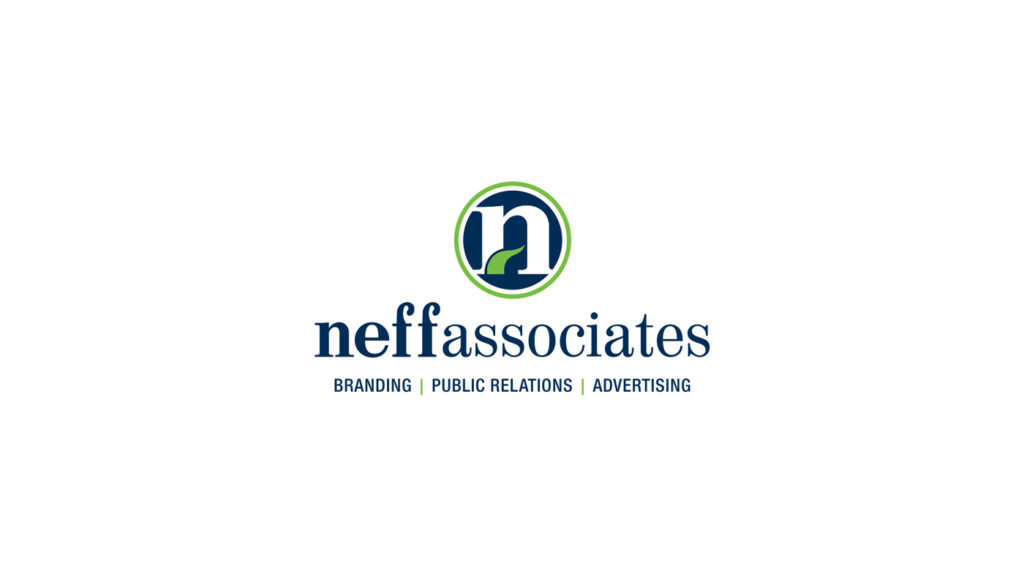
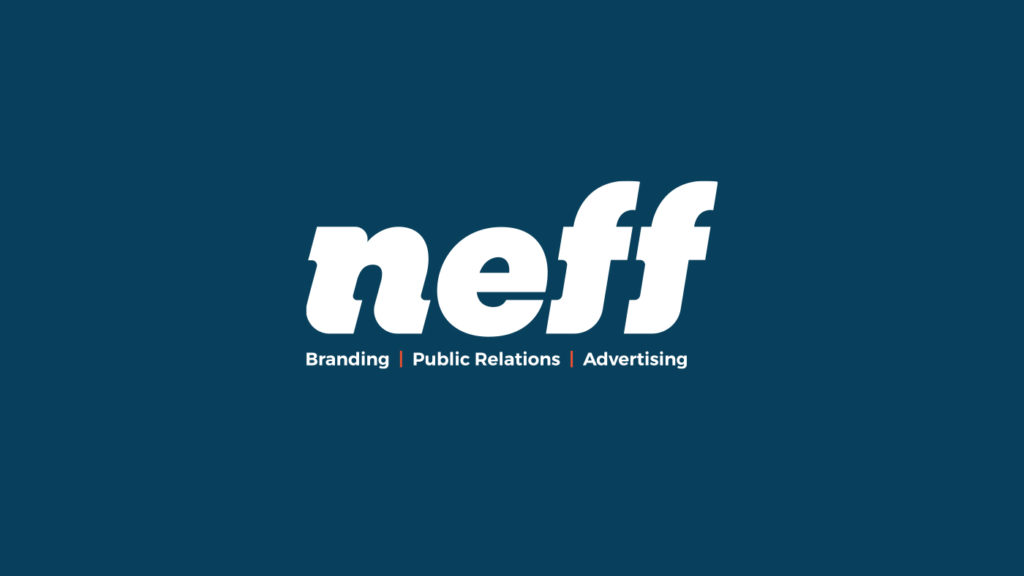
In marketing and advertising, your brand name is synonymous with who you are, what you do and what you stand for. With that, the first thing we wanted to redefine was our mission and our name. We agreed that Neff Associates sounded too buttoned up and old fashioned, more like a law firm than a modern agency, and it didn’t represent who we are. After endless rounds of brainstorming, SWOT analyzing, and a little bit of debate, we concluded that there’s no word that can encompass everything we do. We’re a collaborative full-service agency, meaning we cover all of our clients’ marketing and advertising needs from branding and websites, to public relations and social media, to media strategy, to videography and photography, and everything in between. How could we possibly narrow all of that down to one word or phrase?
We wanted to contemporize our image, to simplify and reflect who we are today.
David Neff, President and CEO
So, we thought, what else could describe who we are? How do people know us? In casual conversation, both internally and with clients, we’ve always cut it short to just “Neff.” Maybe that’s all we needed to be, maybe the new name didn’t have to be totally different, but just instituting a simple phrase that we already use. It was an easy decision; we unanimously decided we are now “Neff!” Goodbye to that stuffy suffix.
Re-branding as Neff would present the opportunity to showcase our creative work and unique office culture. During the process, we took a deeper look at who Neff is. And no, we don’t just mean the guy who started the agency, but the business and the culture he has grown so vastly over the last thirty years. The twenty-three faces who show up to the office every day ready to create and collaborate, the dozens of awards that adorn our lobby walls, the portfolio of work that amazes potential partners every day, the long list of happy clients that span almost every possible industry, the office dogs who give endless kisses, and everything in between. This was all deeply considered during the Neff rebrand.
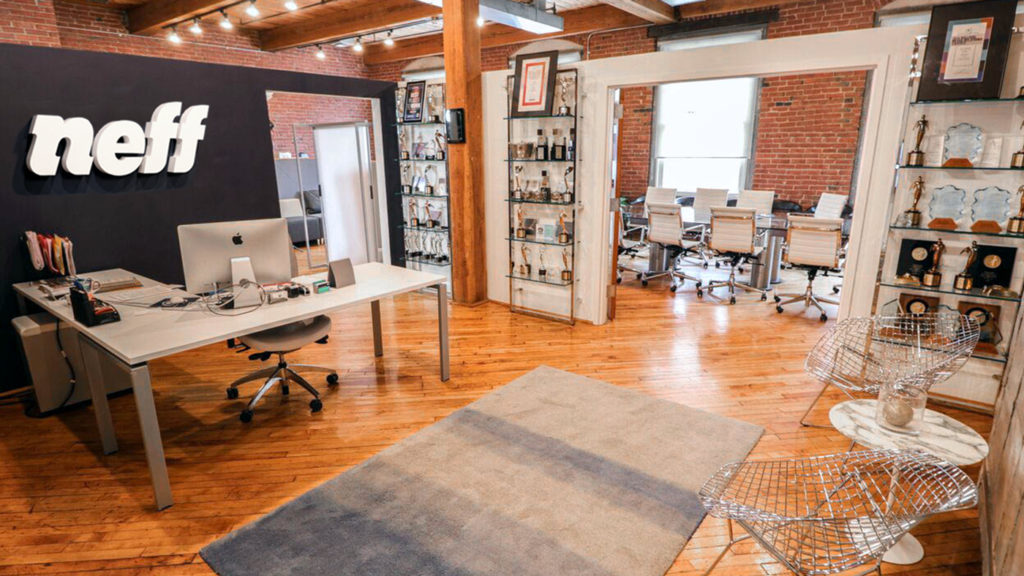
After 30 years, we still have that startup mentality. We hustle and don’t quit, we do whatever it takes to help our clients succeed and builds relationships with those clients. Neff is a full-service marketing agency based in Old City, Philadelphia. Our mission is to use integrated strategies to tell your story and expand your brand. We thrive on collaboration, creativity, and forming strong relations, both internally and with every client.
Great! Now how do we create a logo that encompasses all of that? It was time to put pencil to paper. We first explored dozens of rounds of sketches with the team, breaking one of our biggest rules by involving the whole office every step of the way. But it was important to get every single person’s input, because we all work as a team, and the creative influence of the social and PR teams was just as important as the ideas coming from our designers.
Our first round of sketches consisted of logos from all walks of life: tall, short, wide, thin, square, round. We thought everywhere except inside the box. In the first few rounds of drafts we explored many different logo styles: iconographic, typographic, minimalist, detailed, hand drawn, etc. Seeing all of these different options made the team think even deeper about who we are and how we could show that.
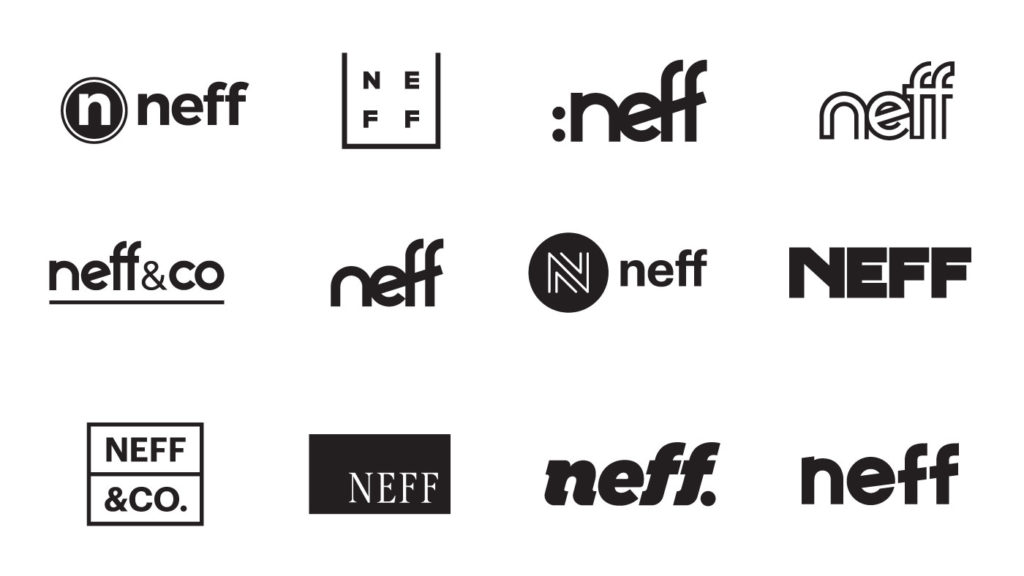
As we narrowed down the logo choices, we paid attention to how we reacted to each design, how each idea correlated with the work that we do for clients and how they connected to our culture. We decided on a direction that was simple, yet bold. This approach would capture the viewers eye, but in an understated way.

Getting closer and closer to our final mark, we started developing a custom typography solution. What kind of creative agency would we be if we just picked a font and used it? Our designers worked hard to make sure every angle, every curve, was thoroughly thought out.
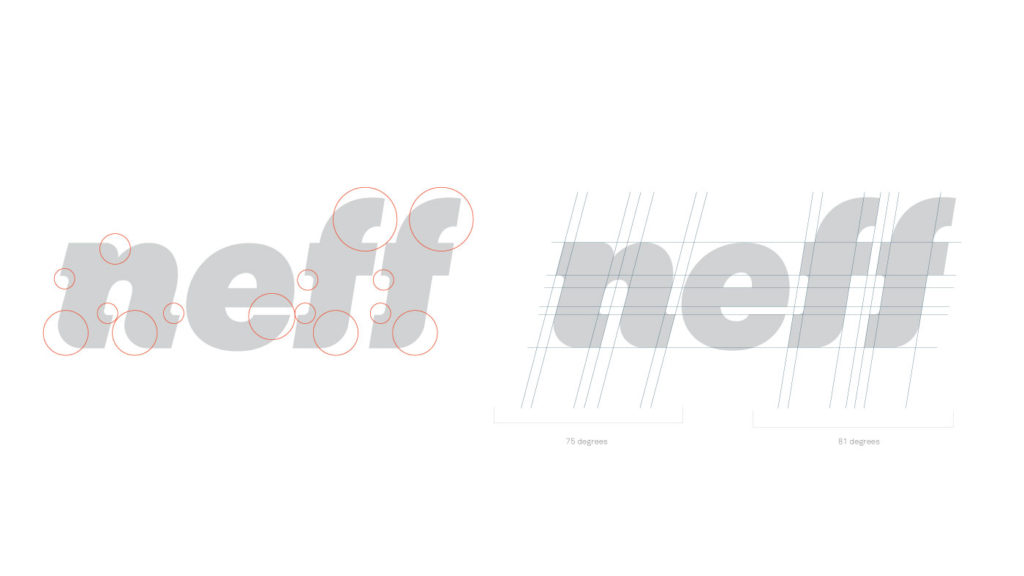
Finalizing the wordmark form wasn’t the end of the journey for this logo. What fun would it be without an icon sidekick? We didn’t want to sacrifice the bold impact of wordmark by putting an icon with it, so we needed one that could stand alone and represent the brand independently as a companion mark. This is where the new logo family in the Neff rebrand started taking shape.
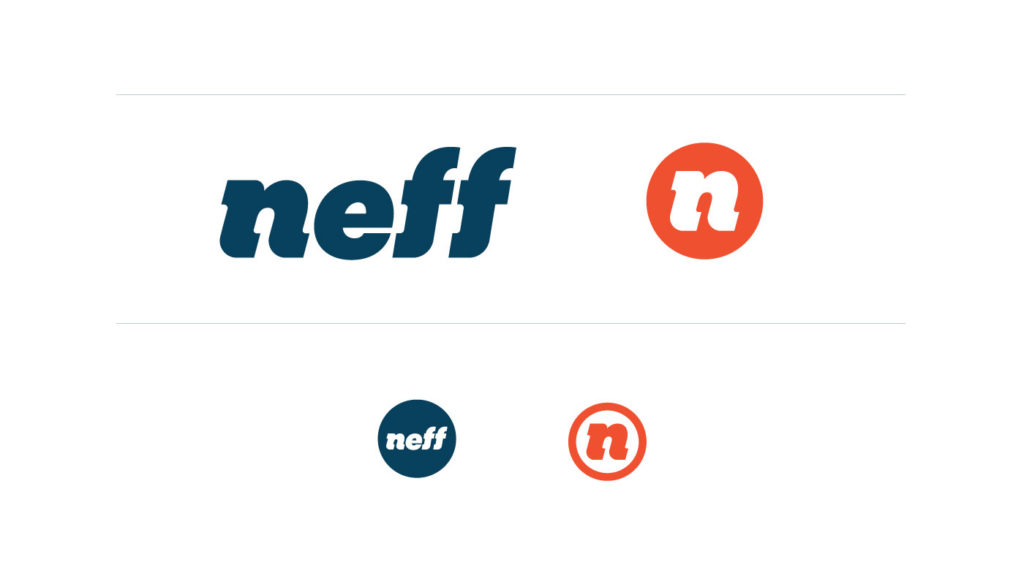
The next agency-wide debate was: go wild with the color or tone it down? As you can see, we compromised. We chose a blend of our classic navy blue and a new bright coral. And for the new color, we wanted to choose something that is loud, yet classy, and has strong character. To emphasize our services coming full circle, we blended the blue and the coral for shades to represent each service.
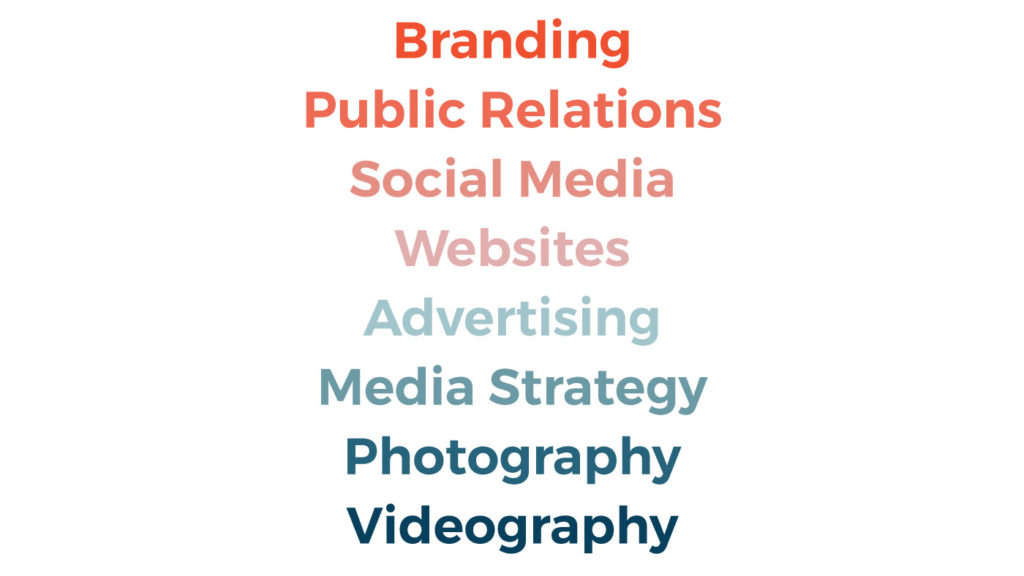
A new brand wouldn’t be complete without rules. Our design team poured countless hours into a 180-page guidelines document communicating how the Neff rebrand should and should not be used. The brand book covers all topics from stretching the logo to blog posts to T-shirt designs. It gives guidance on exactly what we can and can’t do. Our brand coral will never be printed as pumpkin orange, or Santa red, if we have anything to say about it!
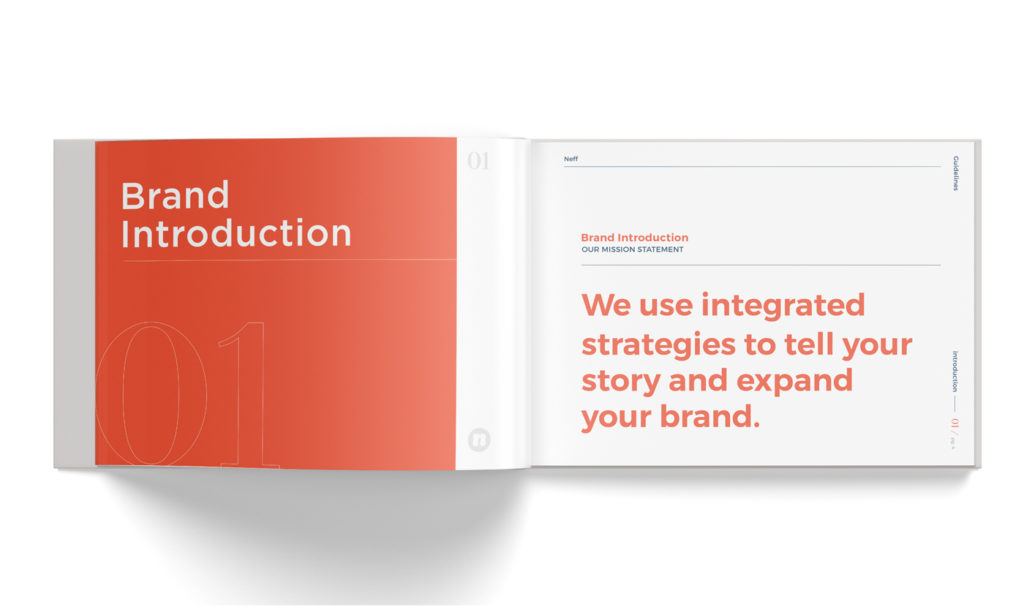
After the rebrand was complete, it was time to bring our new website to life. Content hierarchy was our first priority. Were we thoroughly communicating our capabilities to our audience? Was it immediately obvious how cool we are? It was time to shout to the world what we do it and how effectively we do it. Through an extensive research and architecture phase, we reconstructed the sitemap to create an intuitive experience.
To contrast our new bold brand, we chose a thin, concise font for our page headers and a minimalist type approach to the layout. Our main focus was showing how we help our clients communicate their brand through public relations, social media, branding, websites, advertising, media strategy, videography, and photography. Using eye-catching, yet understated graphics and a bold font to define our services, we let our portfolio do the rest of the heavy lifting.
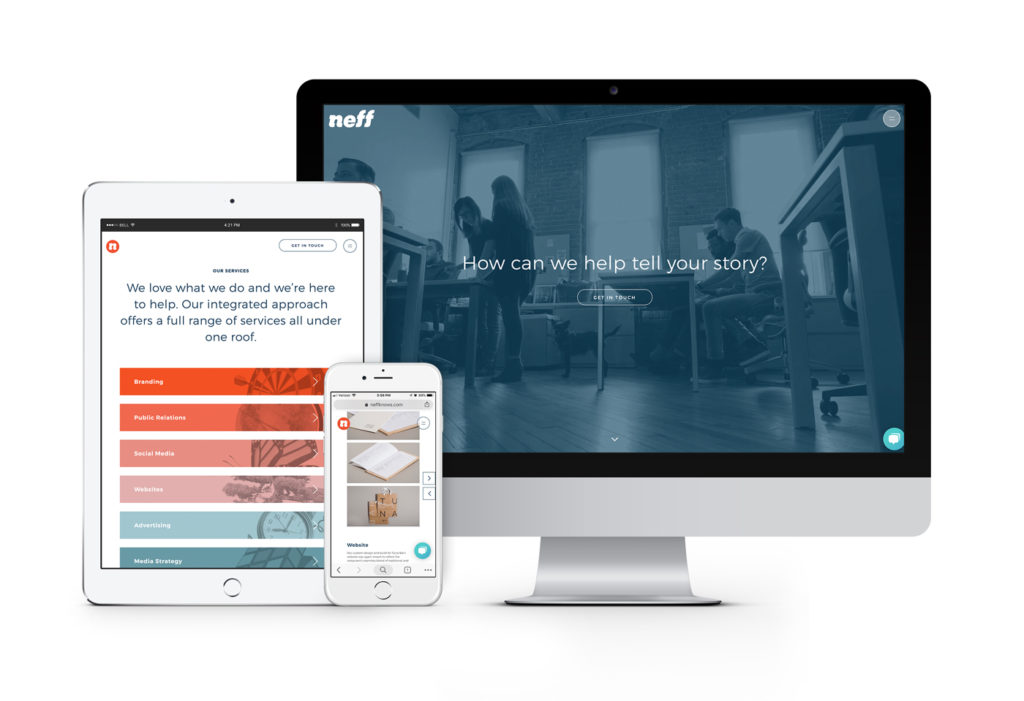
Now that we had a new brand and a beautiful, updated website to show for it, it was time to let the world know. Through the efforts of our social media team, we launched the new @Neff_Knows campaign. Over the course of a two-day launch, our handles adopted our new tagline and our profiles got a facelift. Not only did we update our social media platforms on the surface, we are undergoing a complete social identity overhaul. With new social guidelines in place, our posts will have an updated, concise style. It reflect our new look and feel.
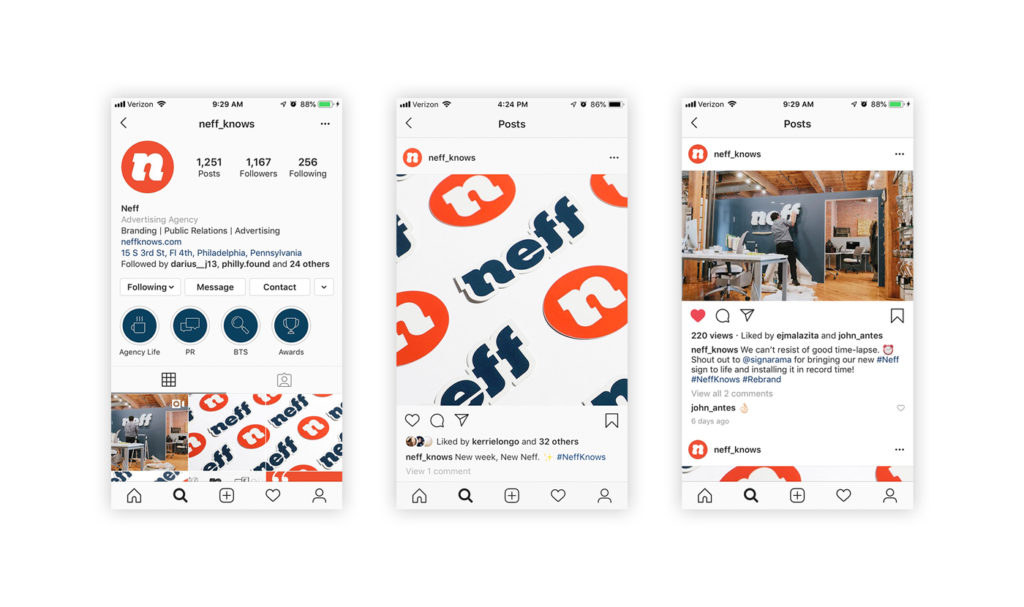
And how could we stop there with the re-branding fun? With no sign of “Associates” in sight, our office is now decked out with new signage and swag. There’s no shortage of newly brand Neff t-shirts, hats, pins, and stickers, and business cards to show off.
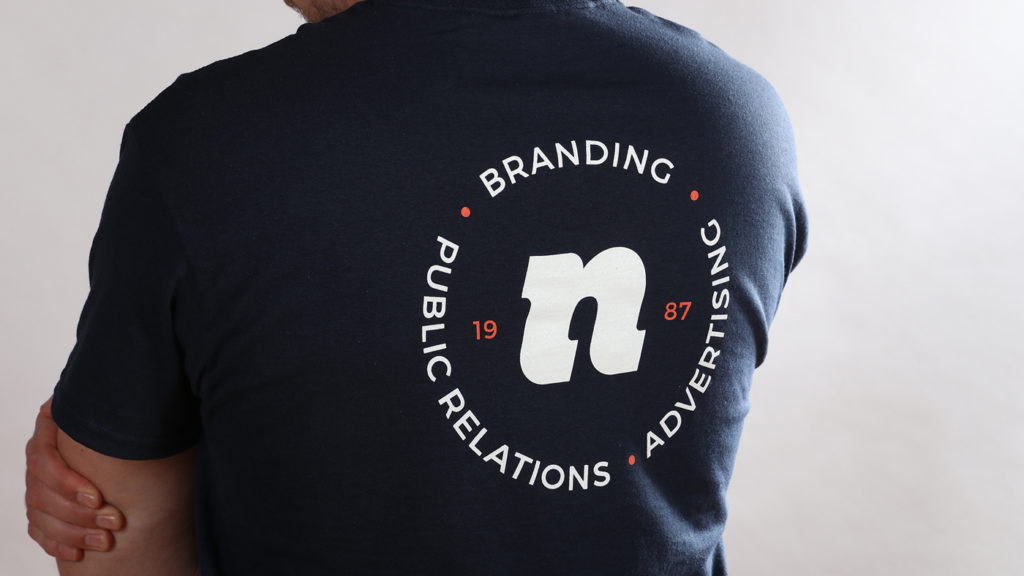
We’re excited to share our new brand with the you. We hope that it gives some insight into the creative, collaborative, innovative agency that we are. Also, we genuinely love helping our clients launch their brands and are thrilled to be able to give ourselves a makeover for the first time in thirty years. (Can we say case of the shoemaker’s child here?) For updates about the Neff rebrand and our clients, follow us on social media @neff_knows and sign up for our newsletter in the footer below.